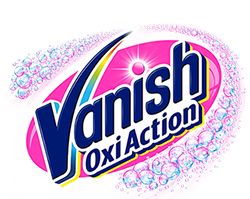Slippery Business
From motor oil to olive oil, stains resulting from splashes of oil can adhere to your clothing for long, unless you take quick action. Even the more esoteric varieties of oil such as chestnut oil, peanut oil, sesame oil or coconut oil have similar properties that bind to fabric, creating those characteristic dark spots that never seem to fade even after several washes. In this article, we’ll explore the best methods of oil removal, and learn how to get the most out of your Vanish stain removal system.

Removing the Stain
Whether you were changing the oil in your car, or got caught on the wrong end of a spill while cooking, oil stains need to be acted on quickly. The faster you start working on the stain, the easier it will be to remove because the lesser is the chance of it binding to the clothing fibres. Waiting for even a few hours can make the stain that much harder to remove.
For most fabrics, you need to treat the stain immediately with hot water. Wash through from the inside of the fabric (i.e. not the side that the stain initially affected) to help push out the stain from the cloth. Once you have thoroughly washed through the stain, there will still be some of it remaining.
If you are away from water, scrape off the excess oil with a spoon or other soft-edged object . Then blot away with a dampened cloth or paper towel to pull off more grease. Be careful not to spread the stain, but rather blot the area carefully with firm pressure.
Remove Oil Stains with Vanish
Oil stain removal is easy with Vanish. For both types of oil, use Vanish Oxi Action Gel, which removes oil stains with little fuss and more penetration.
- Start by soaking the garment in four litres of warm water containing 60ml of the gel. This solution will get to work on the stain.
- Soak the fabric for a maximum of one hour for colours, and six hours for whites. This will help break down the oil effectively.
- Once fully soaked, it’s time to wash. Choose your regular washing machine setting, and place a pod with 60ml of gel within the drum, along with detergent.
- The oil should be fully gone by the end of the cycle, so simply allow your clothing to dry.
Tips to Prevent Oil Stains
When doing anything with oil, it always pays to wear a smock, apron or other kind of protection, even old clothes! Particularly in a garage setting, since the work is normally quite greasy, old clothes save your new ones from being damaged. An apron is essential protection in the kitchen, particularly if you are dealing with hot oil or boiling water. Frying fats will spit onto your clothes, causing tiny build-ups of oil, but in case of a spill, you will have the added protection it provides.
